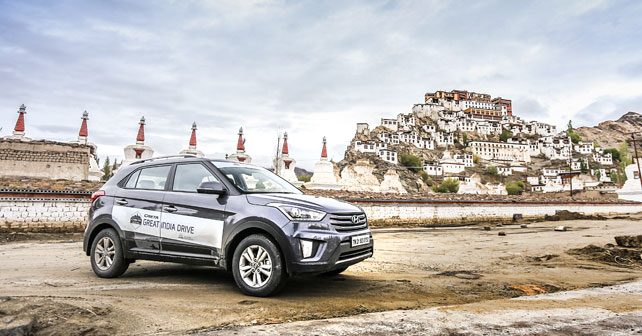
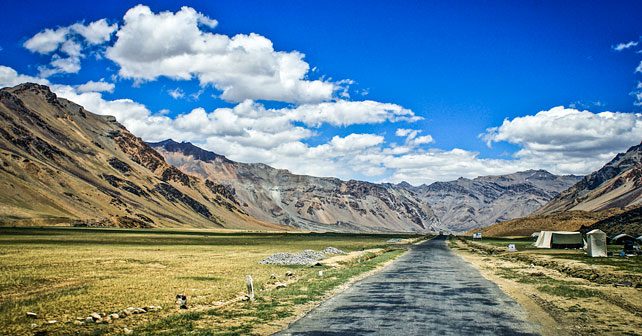
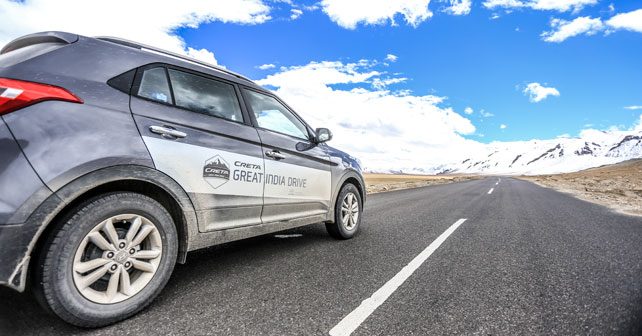
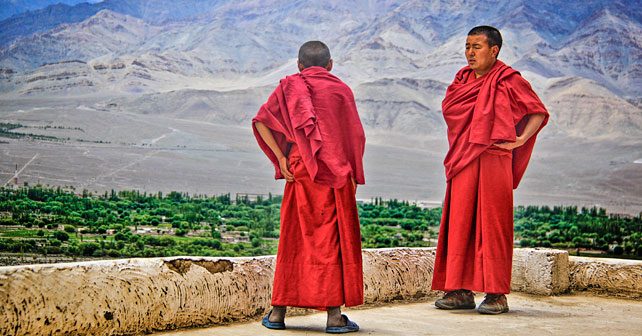
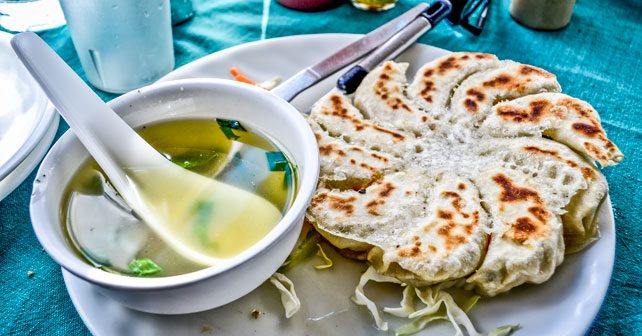
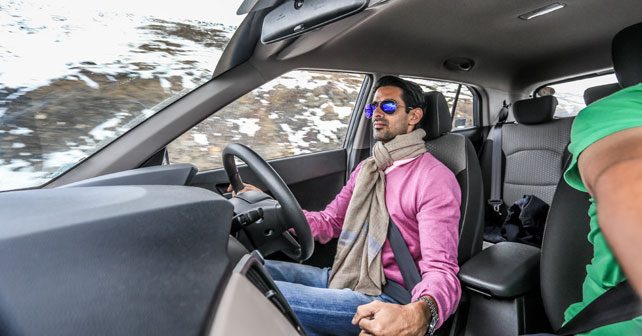
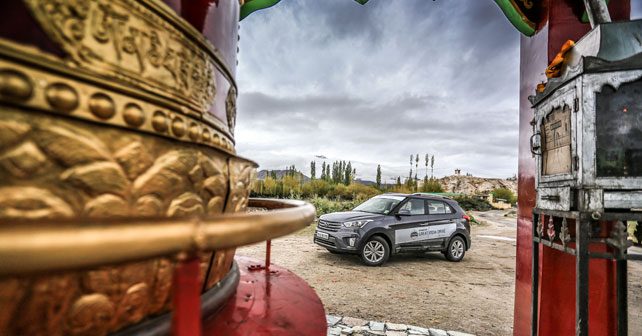

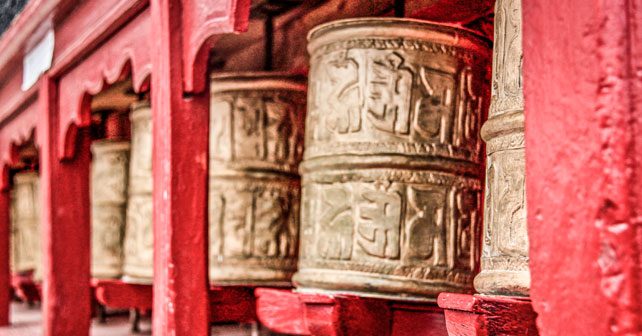
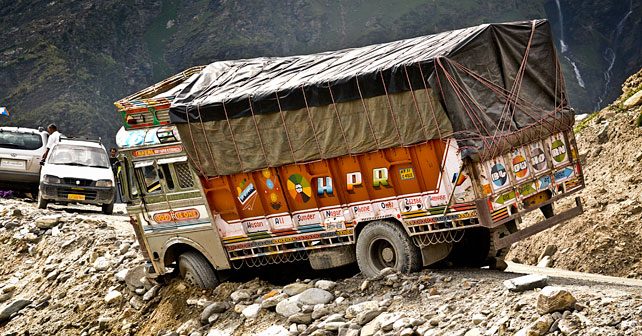
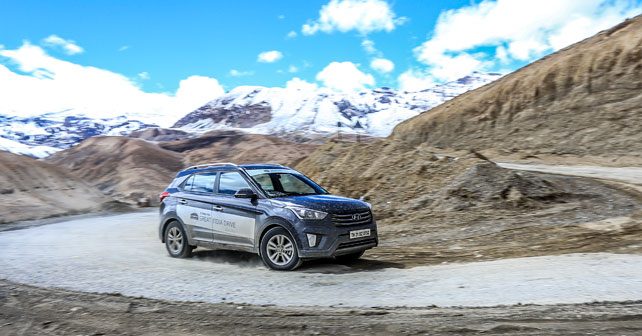


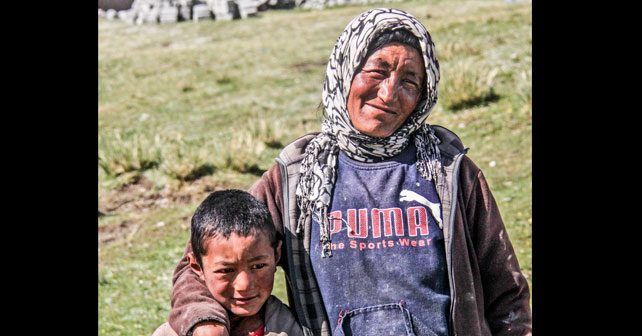

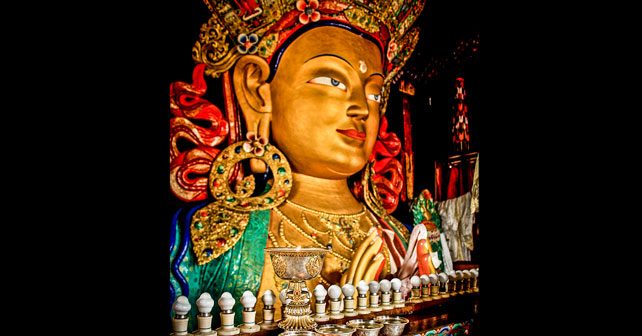

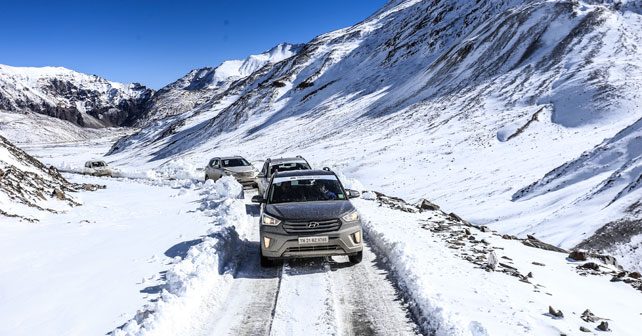
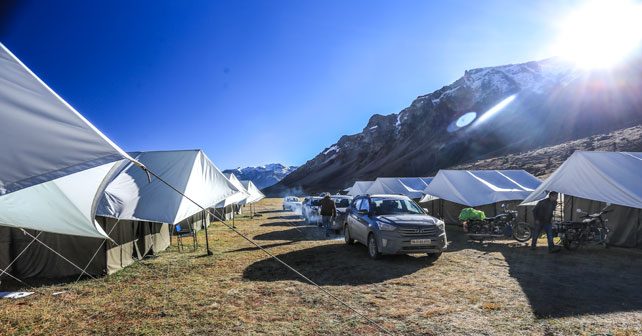
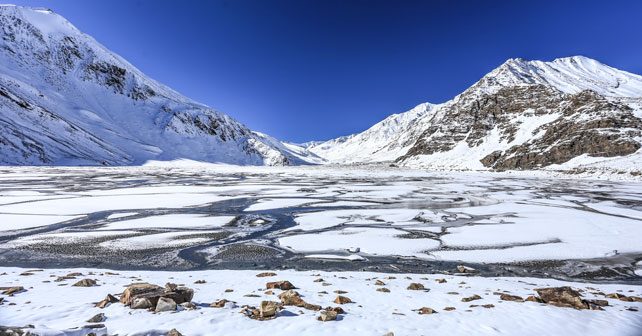
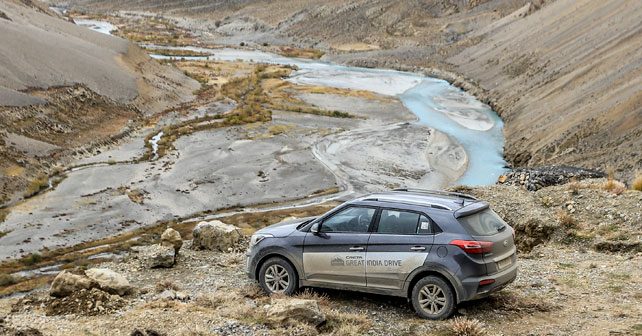
As Hyundai geared up for the Great India Drive with the Creta, we thought we would go a little beyond. Here’s part one of our epic drive from
As Hyundai geared up for the Great India Drive with the Creta, we thought we would go a little beyond. Here’s part one of our epic drive from Thiksey Monastery in Leh to the Tigers Nest in Bhutan.
In late September, Hyundai opened what is most likely the company’s highest showroom anywhere in the world – Togo Hyundai in Leh. Naturally, they felt this was reason enough to invite some of us to this high-altitude desert to attend the opening. But that wasn’t all. They had something else up their sleeves as well –the Great India Drive as it came to be known.
Ever since the Creta was launched in late July, it’s safe to say that it set the sales charts on fire. And Hyundai truly wanted to hammer the point home that this is a proper SUV, and not just a poser. So a lot of us were handed our long-term Creta’s in Leh and encouraged to drive them back to home base – or, even better, beyond!
Now, it may have been known as the Great India Drive, but as some of you know we take any and all suggestions with a pinch of salt. So, we thought we would push the boundaries just slightly – as we tend to do here at autoX. Well, speaking of boundaries – to be precise we thought it would be a good idea if we crossed one particular boundary in the North East (at Jaigaon in West Bengal to be precise) and entered the mountain Kingdom of Bhutan. The plan was pretty straightforward actually, we would go from the Thikse Monastery, just outside of Leh, to the Tigers Nest (or Taktsang Palphug Monastery) located on a sheer cliff face in the upper Paro valley of Bhutan – to highlight the shared heritage between India and her neighbours of course, but also to put the Creta truly to the test.

The first half of the journey – albeit quite familiar – would likely be the most challenging. Ashish and I would be drive from Leh to Delhi, while Kapil and Abhishek would take over and carry on to Bhutan and back. Now, normally, attempting this journey in late September would be the perfect time of the year – because it’s before the snow sets in and after the tourist season when the roads tend to become as packed as the journey from Mumbai to Pune. But you can’t really bank on the weather in these parts. The snow, it seems, didn’t get the memo and started earlier than normal. The monsoon, meanwhile, decided that it would rather stay on in the North East and parts in Bhutan – but that’s for the second part of this story.
The day before Ashish and I were to set off from Leh, the snow started early in the evening – well, heavy rain in Leh, which indicated snowfall in the mountain passes. The following day we would have to cross, among others, Tanglang La (17,480 feet) and Baralacha La (16,500 feet) on the Leh-Manali highway – both of which now lay closed according to sources. Fortunately, the snow abated in the wee hours and we awoke to the sun peeking through the cloud cover. It was enough for Tanglang La to have opened, but Chang La (17,585 feet) was still closed. Chang La leads to the beautiful Pangong Lake, but wasn’t part of our route this time around. We were heading straight for Jispa, which was to be our night halt before going onwards to Manali the next day. Jispa is only 335 kilometres from Leh but it’s on the other side of Baralacha – which we assumed would be open as well since it’s lower than Tanglang La.

We drove out of the Grand Dragon Hotel in Leh after stocking up the car with supplies, and headed first to Thiksey – about 20 kilometres out of the city on the main highway. But our first pit-stop was the Shey Palace, which was correctly identified on the Creta’s navigation system – impressive! Shey, which is mostly in ruins now, was built in 1655 as the summer retreat for the Kings of Ladakh. Thiksey is just a couple of minutes down the road from Shey, and is a far more spectacular sight. It’s built on a hillside in Thiksey village, and is noted for its resemblance to the stunning Potala Palace in Lhasa – the erstwhile home of the Dalai Lama in Tibet. Thiksey’s twelve stories (arranged in ascending order of importance) are filled with all kinds of Buddhist art – prayer wheels, stupas, statues, thangkas, and much more. It’s definitely a must-see if you’re in Ladakh. Unfortunately, we couldn’t stay long and had to hit the road as soon as possible to take advantage of the clear weather.
Our next stop, we hoped, would be Jispa after a day of driving under the blue skies of Ladakh and Keylong – well, you know what they say about the best-laid plans. Tanglang La stands dead in the middle of a 46-kilometre stretch of road from Rumtse to Debring, one of the special stages of the venerable Raid-de-Himalaya – possibly one of the toughest motorsport events on the planet. In 2006, this stage was the scene of some pretty epic battles on my first Raid. On our first run over this stage (from Debring to Rumtse) I caught the car ahead of me, which was a T1 spec Gypsy – one class above mine – and we battled it out for about 20 kilometres. Suffice to say, the brakes on both our machines were completely fried because of the downhill run after we crossed the summit at Tanglang La. Our second run over the stage was on the final day of the Raid. I was protecting a 45-second lead to a Major in the Army – who was lying 6th overall, and wasn’t happy about it. I knew he would be doing everything he could to usurp my position over this treacherous 46-kilometre stage. As it turns out, he was faster. But only by 30 seconds. We had held onto our position by an absolute whisker, and we had given it everything to do so. I remember my co-driver even praying in the middle of the stage – although I think he was praying for survival rather than victory!

Our pace on this occasion was far less severe. We were against the clock, of course, but not exactly to the tenth-of-a-second. Although, surprisingly, the 1.6-diesel engine in the Creta was quite punchy even at this altitude. I remember my rally car really gasping for air over the high-passes. On the steep uphill hairpins it felt like you could get out and run faster. Needless to say, at this altitude if you did actually try and run at all you would be breathless mid-step by your second stride. The Creta, meanwhile, motored on without any trouble at all. In fact, Tanglang La was almost unrecognisable. The cover of white and the perfect blacktop meant that we could have been in the Swiss Alps rather than the Himalayas. If only the road surface had been this good during the Raid, it would have spared a few of my vertebrae. But to say that the entire road was perfect would be to say that rush hour in our cities is orderly – it isn’t! There are plenty of sections that are still back breaking. Fortunately, the suspension of the Creta is as far removed from a rally car as possible. It’s incredibly soft and forgiving. The ride height as well is sufficient to cross pretty much every obstacle without much trouble. The only place we felt the lack of four-wheel drive was crossing some deep snow in Tanglang La. Fortunately, most of it was on the downhill section so it wasn’t too much trouble.
The next milestone was the Morey Plains – as I remember it, one of the most peaceful places on the planet. I’ve always wanted to just pitch a tent on the Morey Plains and spend the day looking at the surrounding mountains and blue skies and the nights star gazing. The last time I visited, in 2006, there were no roads at all – you had to make your own path through the Plains. But now there’s a two-lane road with perfect tarmac. I have to say, though, this way you cross the Morey Plains before you know it and it doesn’t have that same uninhabited, desolate vibe as before.

Next up are the Gata Loops – a series of 21 switchbacks that drop you almost 1,500 feet in a handful of kilometres. In the rally car – since it made up a transport section on the final day of the Raid – we would simply turn off the road and drive straight down the mountain on occasion. Well, we didn’t try any of that this time around but we did enjoy flinging the Creta through the multiple hairpin bends.
The clouds were still looming on the horizon but we had made good time and the weather had stayed clear so far. But things can change very quickly in these parts. By the time we got to the border of Himachal Pradesh, thirty kilometres away, you could see Baralacha La buried in the clouds in the distance. Clearly, it was snowing. We got news that the pass had been closed all day and there was no chance it would open today. Jispa, it seems, would remain out of reach. We were told not to venture too close to the pass for fear of getting stuck. We decided to go a little further to find a camp at Sarchu that would give us a tent for – the best we could hope for in terms of accommodation for the night. The camps were either being dismantled because it was getting too cold at night, or the ones we had heard of were sold out. Fortunately, we managed to find one that would give us shelter for the night. And food too, as we got a bowl or two of steaming hot Maggi – the staple diet in these parts.

Food and shelter, what else do you need you say? Well, allow me to list all the items that I was wearing while attempting to sleep that night. Thermal underwear, track pants, ski pants, woollen socks, a sweatshirt, sweater, jacket, scarf and woollen cap. I also had the luxury of four blankets and a hot water bottle, but I didn’t sleep a wink. Well, 14,200 feet, minus ten degrees C, and a flimsy tent for shelter doesn’t exactly match the Four Seasons for comfort. Thankfully, the rain stopped in the middle of the night – but the wind picked up. The combined effect meant that by 7am the next morning, when the sun came up, we were welcomed by the clearest blue sky I’ve ever seen in my entire life. There was not a cloud in sight.
Great, we started up the cars (fortunately the diesel hadn’t frozen overnight), cleaned off the ice from the windows, and set off – hoping against hope to beat the traffic that had undoubtedly built up at the Pass. We didn’t. We managed to make it the near the top before we got stuck behind a convoy of trucks that had been stuck from the previous day. It took two hours to get five of the six trucks going – one had to be pushed to the side – and another two hours to navigate the incredibly unruly traffic on both sides of this one-lane high-mountain pass with two feet of snow on either side of the single lane that appeared in the middle. We got eerily close to the edge on a couple of occasions and had some heart-in-mouth moments navigating this kind of terrain with no four-wheel drive. But, thankfully, the Creta motored on with a little coaxing, and after much negotiation with trucks, taxis, bikes, cyclists (yes, crazy cyclists from all over the world) we were finally through. Of course, assuming it snows here on occasion (it does) you would think that they would have managed to figure out a way to manage traffic in the aftermath of a storm (they haven’t). All it would take is four men with walkie-talkies, but perhaps I’m being too hopeful. After all, what would we do without a little adventure on our journey.

Of course, we didn’t stop at Jispa. We headed all the way to Manali, which meant crossing the dreaded Rohtang Pass. Every time I cross Rohtang I promise never to do so again, because the road is simply dreadful. It’s a car-breaker. Fortunately, the Creta wasn’t too perturbed while getting us to the other side. Once across, the road improves remarkably all the way into Manali. Since we’re past tourist season, the traffic wasn’t too bad either. We made it to a hotel with plumbing for the night – what more can you ask for? The next day, only the relatively straightforward journey to Delhi remained.
After that, though, would be the start of another adventure altogether. But that’s for another team, and another issue. So don’t miss the completion of this epic journey in our next issue, as Kapil and Abhishek battle the elements once again to bring you some beautiful shots from Bhutan. Stay tuned!
Read Leg 2 of the Journey here - Driving a Hyundai Creta from Delhi to Bhutan

Write your Comment on